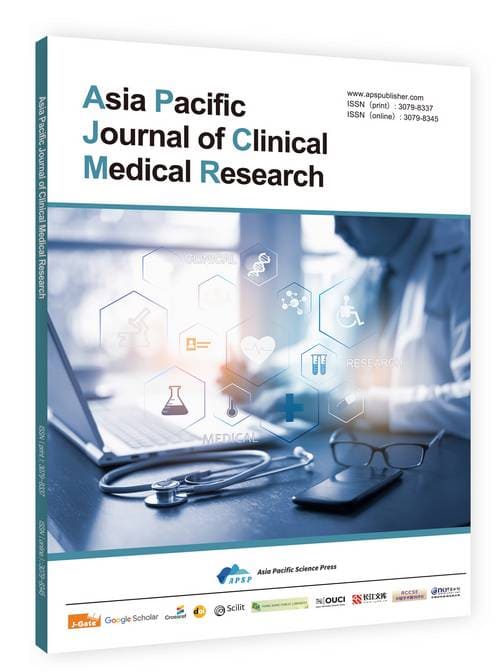Comparison of the Effect of Different Tidal Volume Combined with Breath-Holding Function in Clearing Airway Retention
DOI:
https://doi.org/10.62177/apjcmr.v1i4.603Keywords:
Tidal Volume, Ventilator, Ventilator-associated Pneumonia, Critical CareAbstract
This study aimed to compare the effectiveness and safety of different tidal volumes combined with breath-holding during inhalation for clearing airway retention, and to explore optimized strategies for preventing ventilator-associated pneumonia (VAP). The study enrolled 105 adult patients receiving mechanical ventilation at the Emergency ICU of Dalian University of Technology Affiliated Central Hospital from April 2023 to June 2024. Using a randomized digital table method, patients were divided into three groups (A, B, C) with tidal volumes of 8ml/kg, 10ml/kg, and 12ml/kg respectively. Standardized VAP prevention measures were implemented alongside daily four-time-point airway clearance through ventilator-assisted breath-holding. Results showed that Group C demonstrated significantly higher post-operation airway clearance (p<0.001) and more frequent coughing (median 3 vs. 2 times) compared to Groups A and B, indicating that higher tidal volumes enhance secretions expulsion. No significant differences were observed in airway retention characteristics (color, viscosity) among groups (p>0.05). Regarding safety, all groups maintained normal heart rate and blood pressure fluctuations before and after procedures, with oxygenation index briefly declining but rapidly recovering without severe hypoxemia. However, Group C exhibited a higher proportion of peak airway pressure>35 cmH₂O (8.6%) compared to Groups A and B (2.9%). Clinically, Group C had a lower VAP incidence (14.2%) than Group A (22.9%) but higher than Group B (11.4%), though statistically insignificant (p=0.32). ICU length of stay was shorter in Group C, but this difference was not statistically significant (p=0.15). No aspiration or suffocation occurred across all groups. This study demonstrates that the combination of 12ml/kg tidal volume and breath-holding during inhalation can more effectively clear airway retention without significantly increasing safety risks. We recommend prioritizing this approach for mechanically ventilated patients with adequate lung function, while adjusting tidal volume through individualized assessment. Future research should further validate long-term outcomes and evaluate its efficacy across multiple centers.
Downloads
References
Fan, H., Song, G. Q., Chen, X., et al. (2018). Effect of two airflow impact methods on removing retained material from endotracheal tube cuff. Chinese Journal of Nursing, 53(5), 553–557.
Papazian, L., Klompas, M., & Luyt, C. E. (2020). Ventilator-associated pneumonia in adults: A narrative review. Intensive Care Medicine, 46(5), 888–906.
Modi, A. R., & Kovacs, C. S. (2020). Hospital-acquired and ventilator-associated pneumonia: Diagnosis, management, and prevention. Cleveland Clinic Journal of Medicine, 87(10), 633–639.
Wang, H., Han, F., & Li, Q. (2014). Risk factors and prevention strategies for ICU ventilator-associated pneumonia. Journal of Infectious Diseases of China, 1(24), 110–111, 121.
Girard, T. D., Alhazzani, W., Kress, J. P., et al. (2017). An official American thoracic society/american college of chest physicians clinical practice guideline: Liberation from mechanical ventilation in critically ill adults. Rehabilitation protocols, ventilator liberation protocols, and cuff leak tests. American Journal of Respiratory and Critical Care Medicine, 195(1), 120–133.
Zou, W. L., & Ma, F. (2017). Effects of different tidal volumes on ventilator-associated pneumonia in mechanical ventilation patients. Journal of Rational Drug Use in Clinical Practice, 28(10), 37–38.
Downloads
How to Cite
Issue
Section
License
Copyright (c) 2025 Jichang Pan, Yanxia Li, Chao Wang, Wei Liu, Xi Zhang, Xiaoli Ji, Yang Lu; Yinghua Zheng

This work is licensed under a Creative Commons Attribution-NonCommercial 4.0 International License.
DATE
Accepted: 2025-09-16
Published: 2025-09-26
















